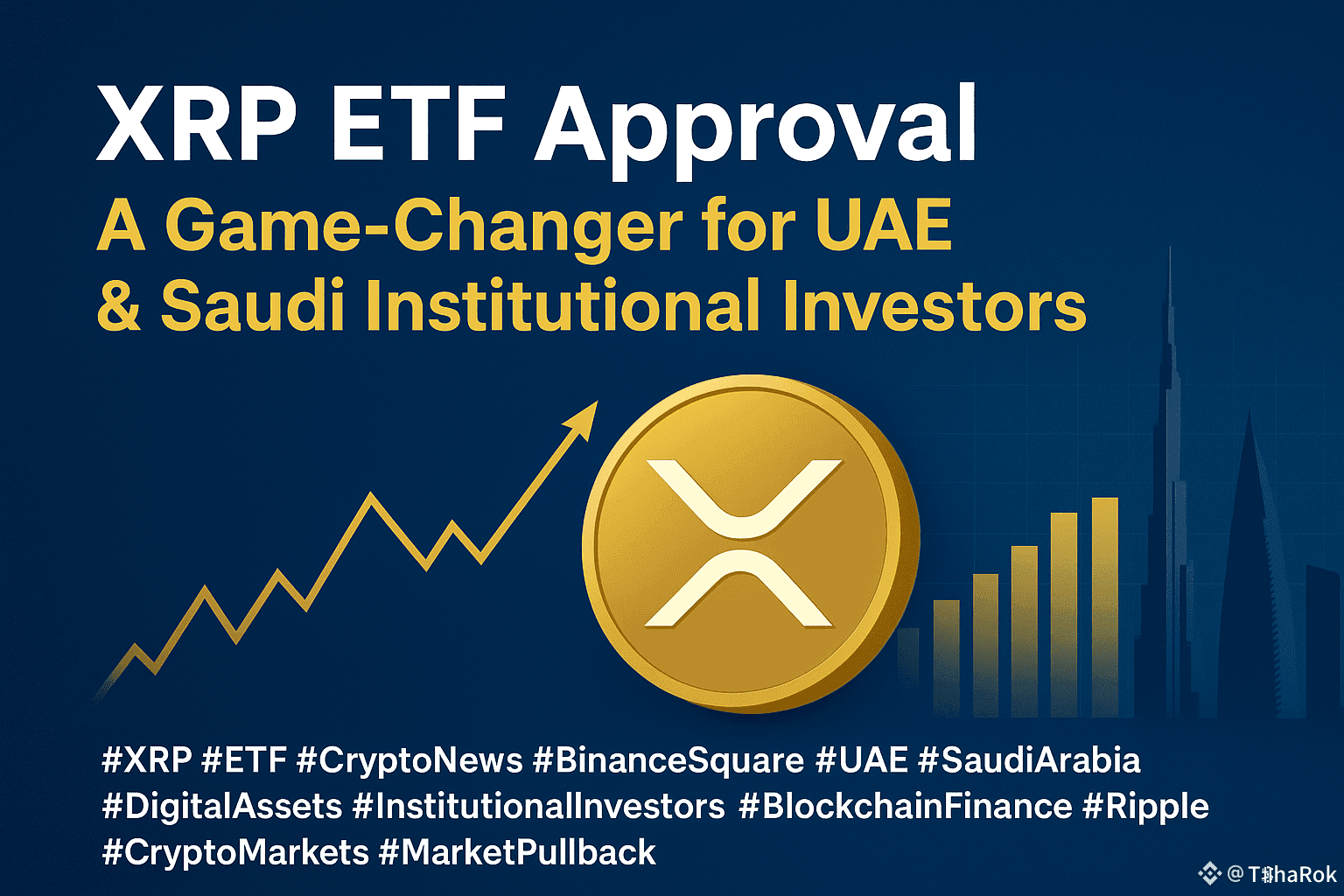The global crypto market may soon witness a defining moment — the approval of a U.S. Spot $XRP Exchange-Traded Fund (ETF). While this breakthrough will send ripples across the world, few regions stand to benefit as strategically as the United Arab Emirates and Saudi Arabia.
Both nations have spent years building robust regulatory frameworks, fintech ecosystems, and institutional on-ramps for digital assets. With an $XRP ETF on the horizon, institutional investors in the Gulf could finally gain regulated access to one of crypto’s most utility-driven assets.

Why ETF Approval Matters
A Spot XRP ETF would allow investors to gain exposure to $XRP through a regulated financial product—without holding the token directly. This structure is critical for pension funds, family offices, sovereign wealth funds, and corporations that are restricted from holding crypto due to policy or compliance reasons.
By bridging the gap between blockchain-native assets and traditional markets, ETFs open the door for capital inflows that were previously sidelined.
In short, XRP’s liquidity, legitimacy, and visibility could all see a major uplift.
The Gulf’s Strategic Advantage
The UAE and Saudi Arabia are among the most forward-thinking jurisdictions in the world when it comes to digital asset adoption.
Abu Dhabi Global Market (ADGM) and Dubai VARA already regulate custody, trading, and issuance.
Saudi Arabia’s Vision 2030 initiative includes strong support for fintech, digital transformation, and blockchain innovation.
An XRP ETF aligns perfectly with both nations’ goals to integrate blockchain technology into mainstream finance. It provides local investors with a safe, compliant, and efficient way to participate in the next evolution of digital assets.
Institutional Confidence and Accessibility
For institutional investors, the ETF structure eliminates operational risks such as private key management or custody complexity.
Banks, family offices, and corporates can gain exposure with clear reporting, insured custody, and audited operations—all within their existing investment infrastructure.
This also signals a psychological shift: XRP moves from being a speculative digital asset to a regulated, investable financial product — a transformation that encourages conservative capital to engage.
Potential Market Impact
History shows that ETF approvals in crypto markets (like Bitcoin and Ethereum) tend to create:
Pre-approval speculation and volatility
Post-approval inflows from institutional investors
Long-term price stability from persistent demand
For XRP, this dynamic could be amplified. Its real-world use case in cross-border payments and its growing presence in Asia and the Middle East make it uniquely positioned for sustained adoption once liquidity deepens.
Looking Ahead
The approval of an XRP ETF would not just mark a milestone for crypto — it would cement the Gulf’s leadership role in the global digital asset landscape.
It gives Emirati and Saudi investors:
✅ Regulated entry into XRP exposure
✅ Alignment with institutional standards
✅ A front-row seat in the merging of traditional finance and blockchain economies
In conclusion:
An XRP ETF represents more than just another investment product — it’s a gateway to the next phase of crypto integration within global financial systems.
And for the UAE and Saudi Arabia, it’s a perfect alignment between regulatory readiness, market innovation, and long-term digital finance strategy.
#xrpetf #xrp #etf #CryptoNews #BinanceSquareFamily #UAE #SaudiArabia #DigitalAssets #InstitutionalInvestors #BlockchainFinance #Ripple #CryptoMarkets #MarketPullback #TSHAROK


